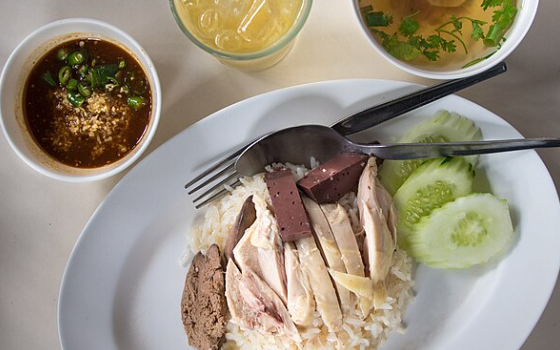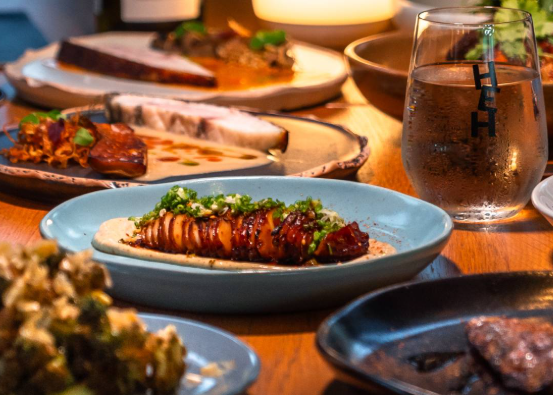
When it comes to classic Asian dishes, there are a few questions that spark heated debates. One that often crosses my mind is: Which is better, Thailand’s Khao Man Gai or Singapore’s Hainanese Chicken Rice? It’s a question I frequently ask when meeting Singaporeans in Thailand, and without fail, they firmly claim that Singapore’s Hainanese Chicken Rice is the superior dish. When I ask Thais the same question, however, their response is usually more indifferent, with little enthusiasm for a comparison.
Hainanese Chicken Rice is considered a national treasure in Singapore. It’s a dish with deep roots in the country’s culture, and it’s revered as a symbol of pride. The perfect version of this dish, which originated in Hainan, China, features tender chicken with a crispy, oily skin and a gelatinous layer underneath. The rice, cooked in chicken broth, adds to the dish’s richness, while a drizzle of dark soy sauce or a tangy chili dip often completes the experience.
Khao Man Gai: The Humble Thai Favorite
On the other hand, Khao Man Gai is somewhat of an understated dish in Thailand. While it’s a favorite among locals, it often doesn’t receive the same fanfare as more iconic dishes like green curry, pad Thai, or tom yum. In fact, you’ll find Khao Man Gai stalls in virtually every food court across the country, usually nestled between other Chinese-inspired dishes like char siu pork, roast duck, and stewed pork leg. This humble food is often seen as a quick and easy meal option, not necessarily something to be celebrated. It’s often served with less desirable parts of the chicken, including a side of bone stock soup and occasionally congealed chicken blood (though I tend to skip that part). Despite its unpretentious nature, Khao Man Gai is a staple in Thai daily life.
Why Khao Man Gai Gets the Edge
For me, Khao Man Gai edges out Hainanese Chicken Rice, but not because of the chicken itself. It’s all about the sauce. Thai Khao Man Gai comes with a distinctive chili sauce that combines ginger, garlic, fermented soybean, chili, white vinegar, and soy sauce. This sauce takes the dish to another level, and while you might argue that the sauce isn’t technically part of the dish, it’s always served alongside the chicken, and in my view, it’s what makes the dish truly special. While both dishes may share similarities, for me, the sauce is the standout feature of Khao Man Gai. The chicken plays a supporting role, rather than being the star of the show. The rice, too, is crucial but follows closely behind the sauce in importance.
The Verdict
While I’m partial to the unique flavor profile of Khao Man Gai, there’s no denying that Singapore holds the edge when it comes to the overall quality and prestige of its chicken rice. Singapore’s hawker centers, with their Michelin-starred stalls and obsession with food perfection, simply cannot be compared to the more casual, laid-back approach to eating in Thailand. Thailand is fantastic for its vibrant street food scene, but when it comes to chicken rice, Singapore’s reputation as a food destination is in a league of its own.
In conclusion, Khao Man Gai may win in terms of the sauce, but Singapore’s Hainanese Chicken Rice reigns supreme in the broader context of culinary excellence.








